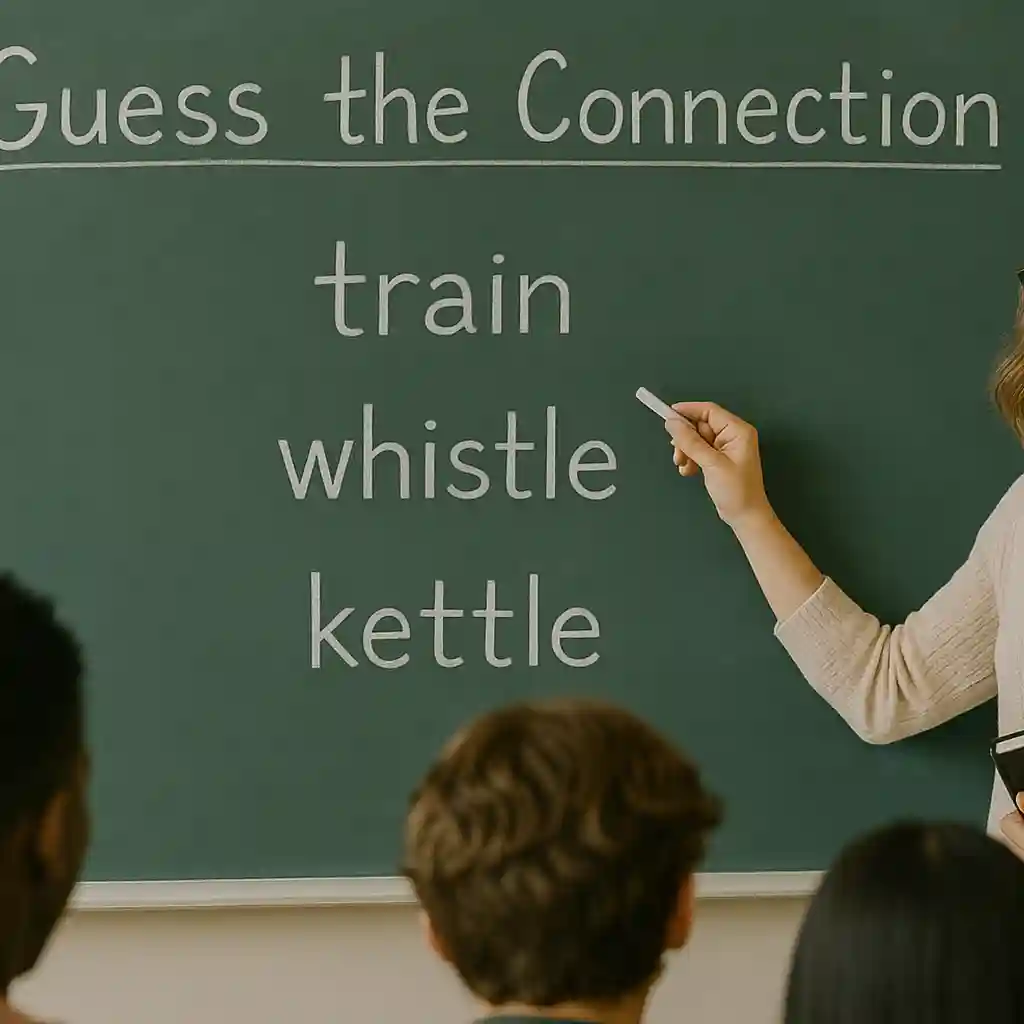Every teacher knows the struggle of those first few minutes of class. Students wander in like they’ve just emerged from hibernation—half-awake, half-talking, and entirely unsure what century they’re in. That’s where minds-on activities come in.
A minds-on task is a short, engaging warm-up that activates students’ thinking, gets them focused, and connects their prior knowledge to the day’s lesson. Think of it as a mental coffee—something to wake up the brain before diving into the main event.
Whether you teach middle school, high school, or college, these 50 fun minds-on activities will help your students start class energized, focused, and ready to learn.
1. Quick Draw
Give students a topic (like “justice” or “ecosystems”) and 60 seconds to draw it. Stick figures are encouraged. Then, have them explain their sketch to a partner.
2. Would You Rather…?
Pose a thought-provoking question tied to your lesson, like “Would you rather explore Mars or the deepest ocean trench?” Students must justify their choice.
3. Two Truths and a Lie (Lesson Edition)
Have students write two true facts and one false one about yesterday’s topic. Their peers guess which one is the lie.
4. The Prediction Jar
Give a one-sentence teaser from today’s lesson. Ask students to predict what they’ll learn and why it might matter.
5. Emoji Reactions
Display an image, quote, or question. Students choose or draw an emoji that captures how they feel about it—and explain their reasoning.
6. Concept Match
Write vocabulary terms on one side of the board and examples on the other. Students race to match them.
7. Brain Warm-Up Riddles
Start with a lateral-thinking puzzle or riddle related to your subject. Even better if it’s delightfully weird.
8. Five Things
Pick a topic and challenge students to name five related things in 30 seconds. (“Name five renewable resources!”)
9. The Mystery Image
Project a zoomed-in photo of something connected to your lesson. Students guess what it is and how it might connect.
10. One-Minute Story
Give three random words related to your subject. Students have one minute to write a short, silly story using them.
11. The Soundtrack
Play a short instrumental clip. Ask: “How does this music connect to our topic today?” Works great in history or English.
12. This or That
Students move to one side of the room or the other based on your question: “Poetry or prose?” “Romeo or Juliet?” “Coffee or tea?”
13. Picture Prompt
Show a single striking image and ask: “What’s happening here?” or “What does this make you think of?”
14. Three Words
Students summarize what they remember from the previous class in exactly three words.
15. The Meme Starter
Show a meme template and ask students to caption it using today’s topic.
16. Human Graph
Students line up based on their opinion about a statement: “Strongly agree to strongly disagree.” Discuss patterns.
17. Quote Connect
Display a quote tied to the lesson theme. Ask: “Do you agree or disagree? Why?”
18. Brain Dump
Give one minute for students to write down everything they remember from yesterday’s lesson. No pressure, no judgment.
19. Rapid Fire Questions
You ask quick review questions; students shout out answers lightning-round style.
20. The Mystery Object
Bring in a real object related to the day’s topic. Students make inferences about what it tells us or how it connects.
21. Vocab Charades
Students act out a vocabulary word while others guess.
22. Caption This
Show a related image and have students write a funny or serious caption connected to the topic.
23. The Micro Debate
Pose a short debate question (“Should school uniforms be mandatory?”). Each student gives one sentence for or against.
24. Sticky Note Connections
Each student writes one idea or question about the topic on a sticky note. Collect and post them on the board to form a visual brainstorm.
25. Lightning Sketch Notes
Students quickly doodle symbols or diagrams showing what they remember from the previous class.

26. Guess the Connection
Write three seemingly random words on the board. Ask students to figure out what connects them.
27. The Brain Chain
Students form a chain of related ideas—each person must add a word or phrase that connects logically to the last one.
28. Class Poll
Use digital tools (like Mentimeter or Kahoot) or simple hand-raising to survey opinions related to the lesson topic.
29. The Silent Start
Challenge students to communicate about a review question without speaking—using only gestures or drawings.
30. The Object Metaphor
Bring a random item (like a rock or rubber band). Ask: “How is this like our topic today?”
31. Analogy Time
Give students a concept and ask them to finish this sentence: “___ is like ___ because…”
32. One-Minute Partner Teach
Students turn to a partner and explain yesterday’s lesson as fast and accurately as they can.
33. The Question Ball
Toss a ball around the room. Whoever catches it must answer or ask a question related to the topic.
34. Fact or Fiction
Share a surprising statement about the topic and ask students to guess if it’s true or false.
35. Timeline Scramble
Give out major events or steps from a process. Students must arrange them in order.
36. The Warm-Up Write
Give a provocative prompt: “Describe a time when you felt misunderstood.” Use it to transition into theme or character discussions.
37. Image Sorting
Show several pictures and ask which best fits the theme, concept, or historical period.
38. The 10-Second Summary
Each student has 10 seconds to summarize what they remember from yesterday’s lesson.
39. Word Association Chain
Say a key term—students shout out the first related word that comes to mind, chaining responses.
40. Classroom Escape Starter
Give one puzzle or clue related to your lesson’s topic that opens the “first lock” of a larger classroom escape activity.
41. The Daily Wonder
Pose a “wonder” question like, “What would happen if gravity stopped for one second?” Then relate it to science concepts.
42. Mini Mystery
Describe a short, unsolved situation. Students make inferences and justify their reasoning.
43. Post-It Predictions
Students write one prediction for what they think will happen in the next part of a story or unit.
44. Three-Image Story
Show three related images. Students create a short narrative connecting them.
45. Ranking Challenge
Give students five related items (e.g., characters, inventions, causes). They rank them from least to most important and explain why.
46. Sensory Start
Play a sound, show a texture, or release a scent related to the topic (think cinnamon for “Christmas stories”). Ask students to guess the connection.
47. The Rule Maker
Provide several examples (like “run, jump, swim”). Students infer the rule (“All are verbs!”). Then flip it—they create examples, and classmates guess the rule.
48. The “What If” Game
Ask big questions like: “What if everyone could read minds?” or “What if Shakespeare had Twitter?” Connect to your theme or text.
49. Student Choice Start
Let students choose the day’s opener from a list: drawing, quick write, debate, or Kahoot.
50. Mindful Minute
Before the chaos begins, dim the lights, breathe deeply, and let everyone clear their minds. Then say, “Okay—let’s think.”
Why Minds-On Activities Matter
A well-crafted minds-on activity does more than entertain. It:
Activates prior knowledge: Students connect old information to new learning.
Increases engagement: Starting with curiosity hooks students immediately.
Reduces anxiety: Fun, low-stakes tasks make learning approachable.
Builds community: Minds-on activities often involve movement and collaboration.
Improves focus: A good mental warm-up helps students transition from “social mode” to “learning mode.”
Think of it as flipping the classroom’s “on” switch. When students start class already thinking, discussing, and laughing, the rest of the lesson just flows.
Tips for Using Minds-On Activities
Keep it short: Aim for 3–5 minutes max.
Connect it: Always tie the activity back to your learning goal.
Rotate often: Keep things fresh—students love novelty.
Reflect quickly: End with one sentence or question linking it to the main task.
Adapt and reuse: Many of these can fit any subject—tweak them for math, science, or English.
Wrapping Up
Minds-on activities don’t have to be complicated to be effective. The best ones are short, clear, and connect naturally to your lesson. Whether your students are dissecting Shakespeare, building circuits, or graphing data, the first few minutes set the tone for everything that follows.
So go ahead—try one (or ten) of these minds-on activities this week. Your students will thank you, your lessons will start stronger, and you might even find yourself looking forward to those first chaotic minutes of class.

